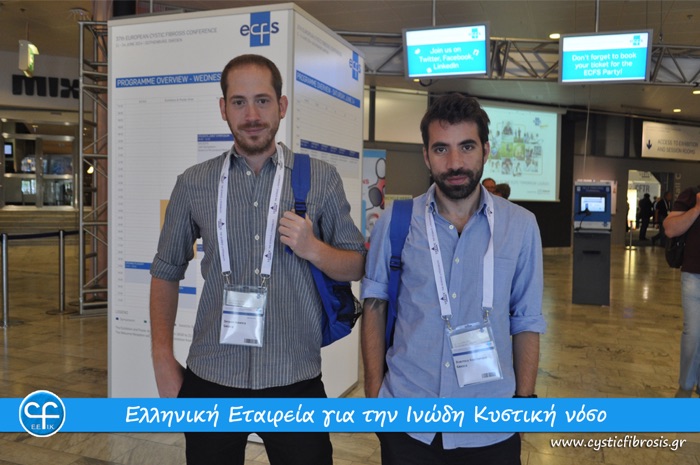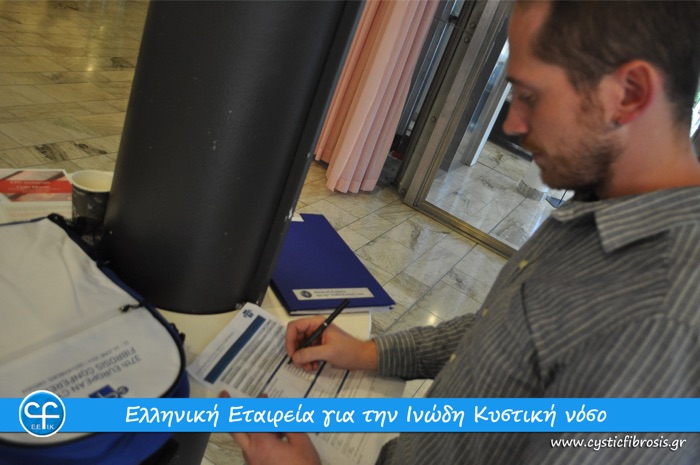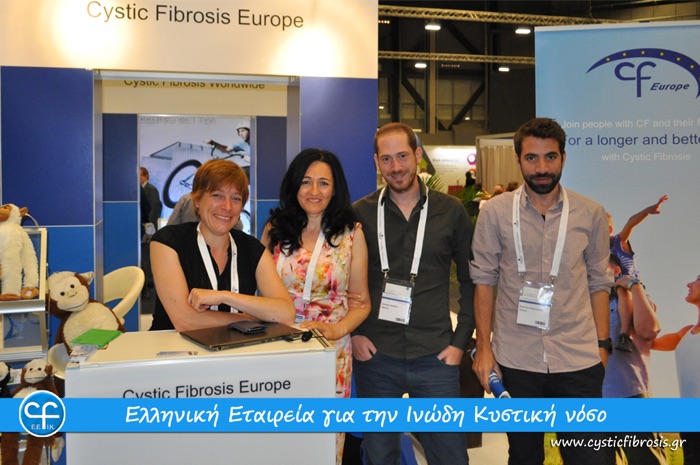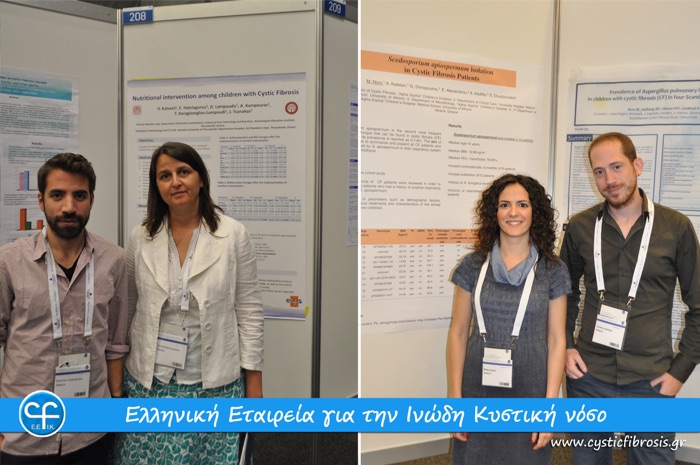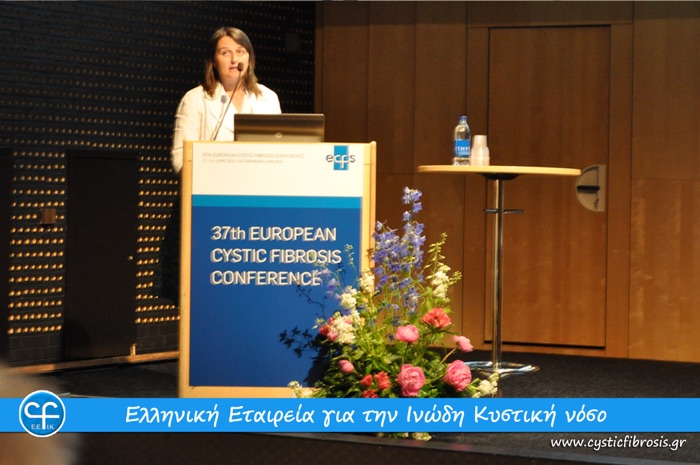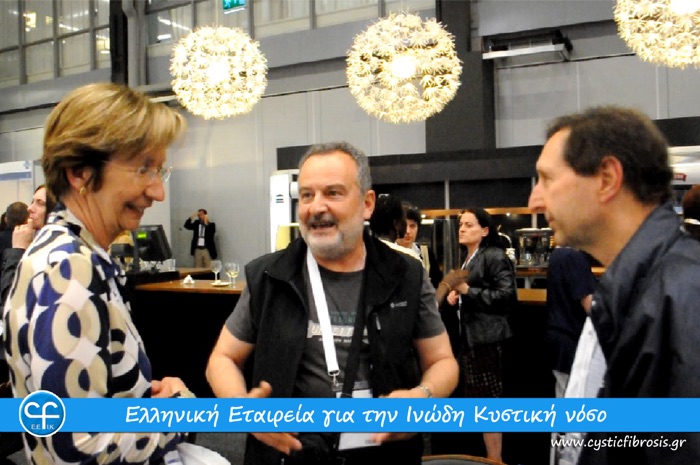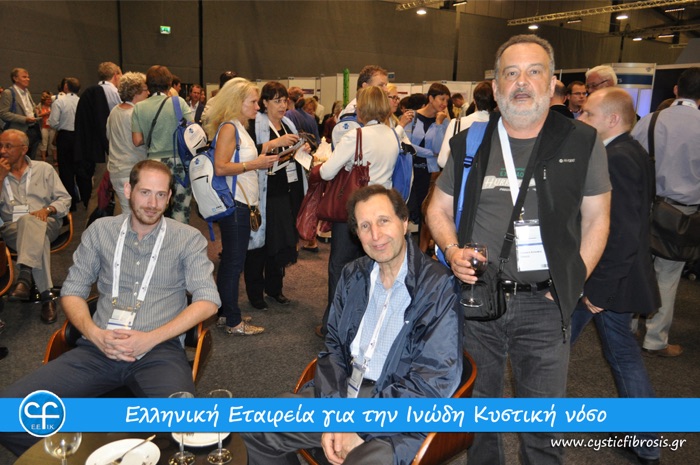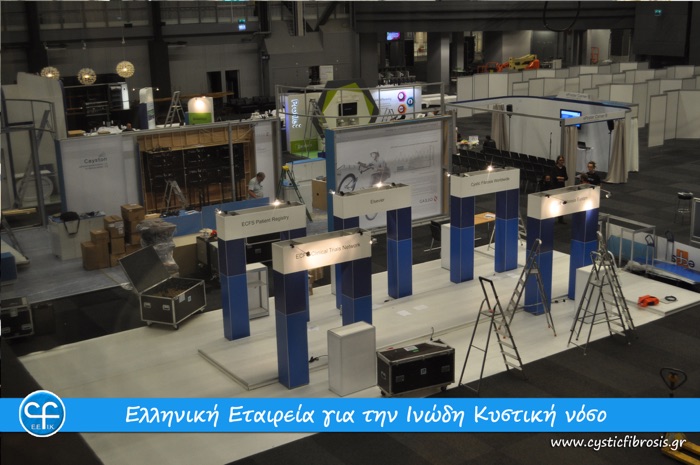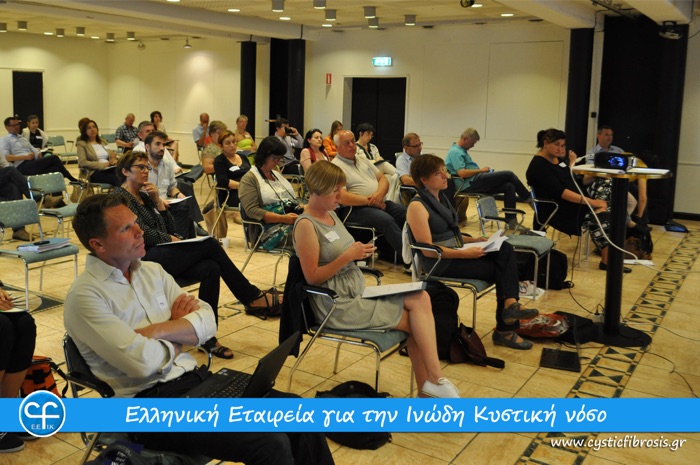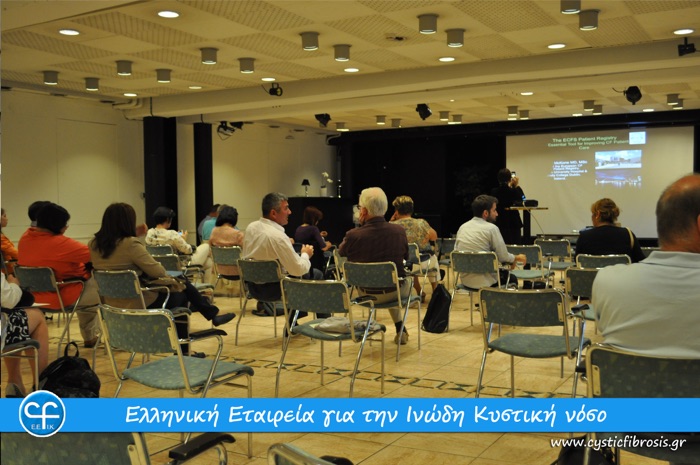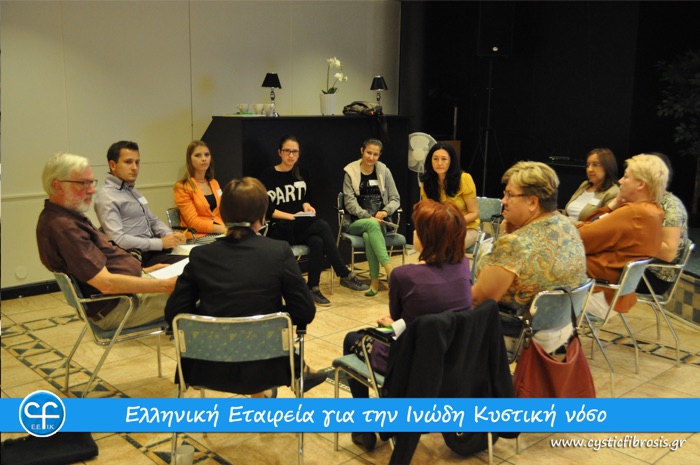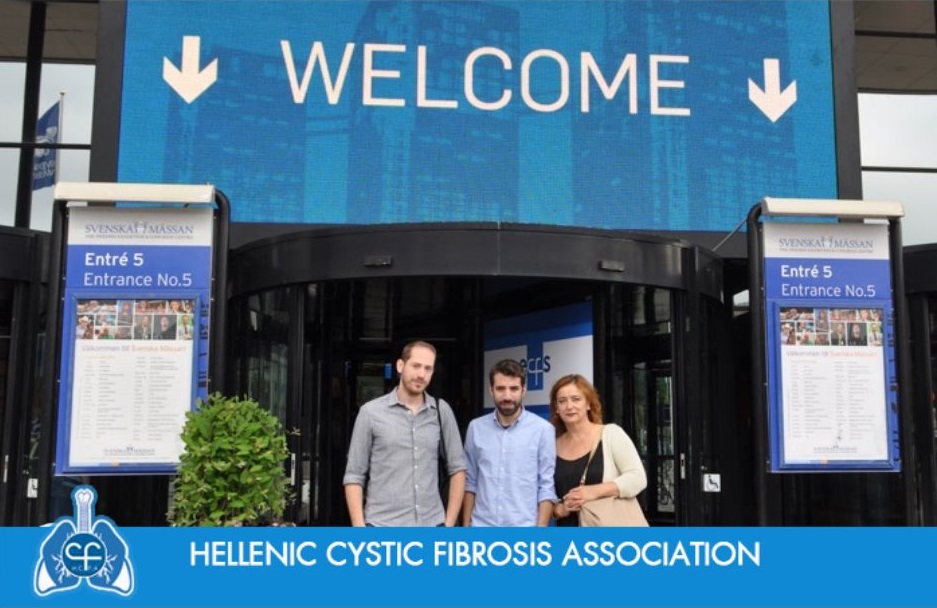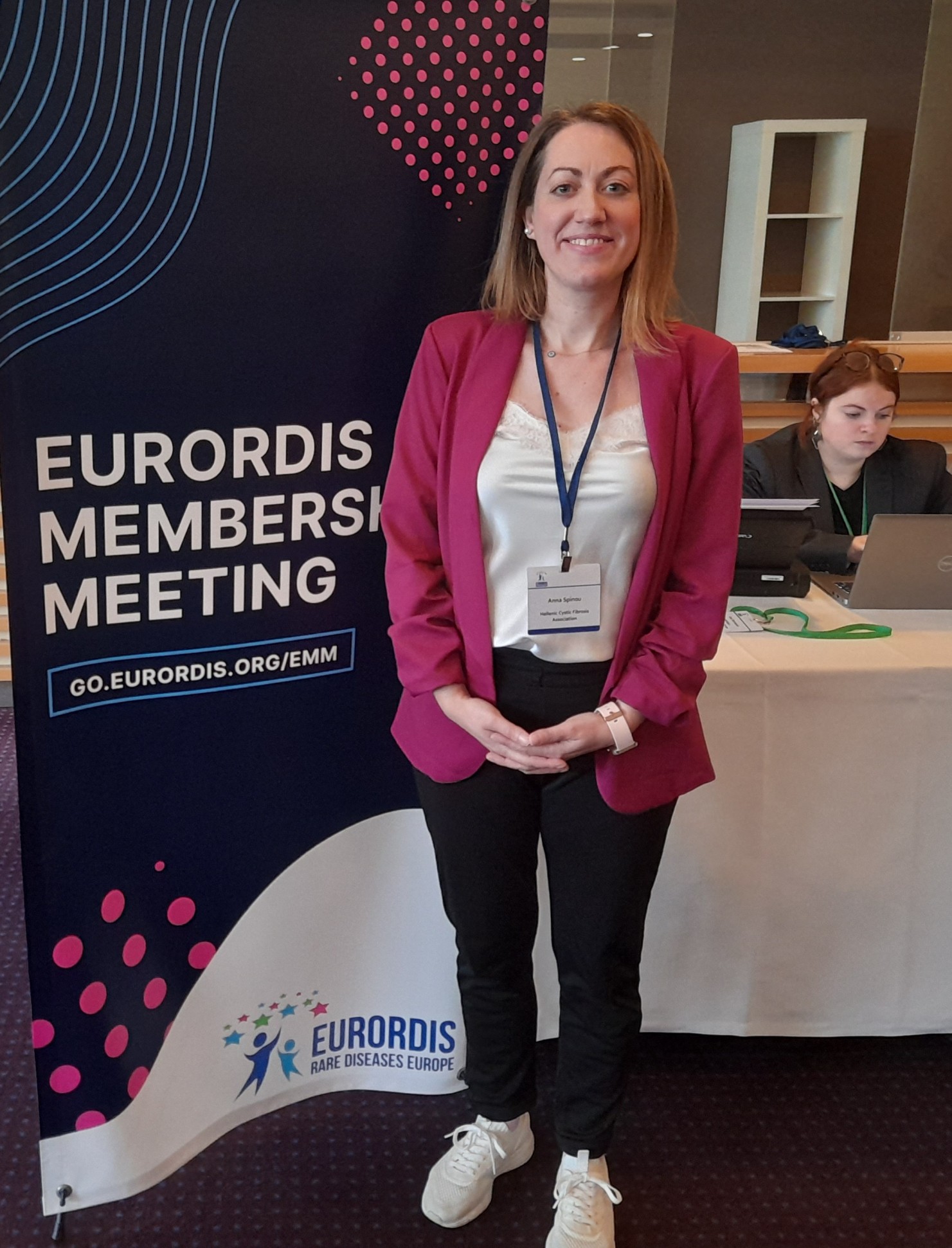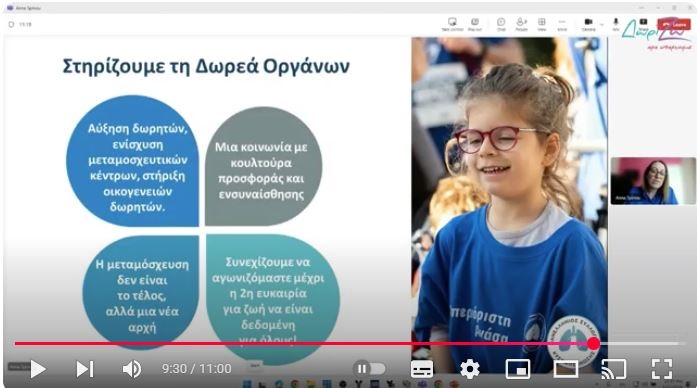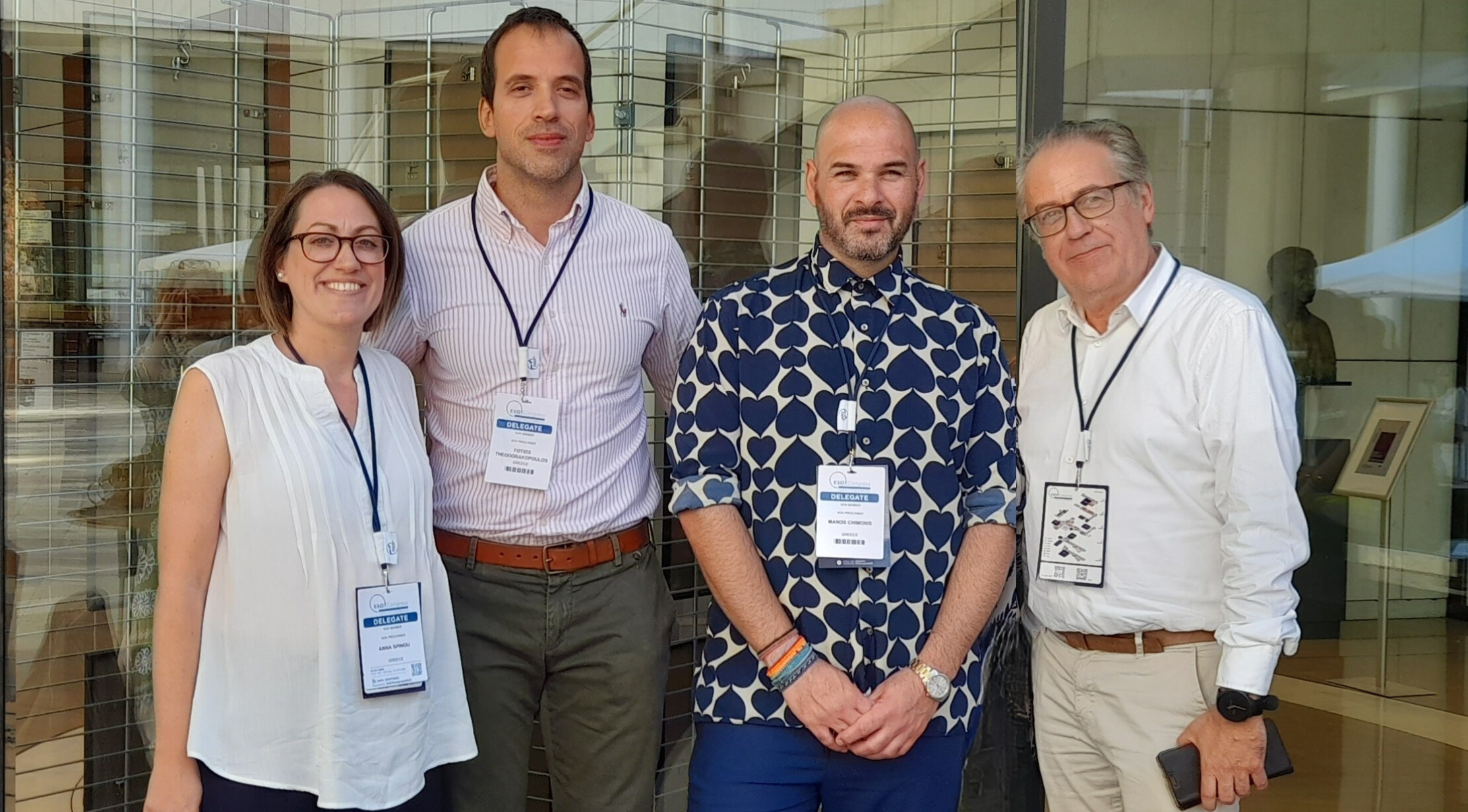37th European Cystic Fibrosis Conference in Sweden
HELPFUL NEWS FROM DRUGS AFFECTING GENETIC DAMAGE AT THE 37th EUROPEAN CONFERENCE ON Cystic Fibrosis IN SWEDEN AND GREECE IN THE PROGRESS FOR 2014
This year’s 37th European conference in Sweden was a continuation of the presentations of new drugs for the definitive treatment of the disease rather than the symptomatic treatment. This is a revolution in the treatment of the disease with drugs that stabilise the patients’ condition by repairing the genetic damage while targeting the patient’s specific mutation. While successfully administered drugs for the G551D mutation at the end of the summer we are now awaiting the results of the combination of activator drugs with repair drugs for the DF508 mutations, one of the most common mutations in our country. Possible launch is estimated in about the next 3 years. So today we are therefore discussing opening new avenues with the aim of finding a cure for each mutation.
THE IMPORTANCE OF PATIENT REGISTRATION AT EUROPEAN LEVEL
During the second day of the European conference in Gothenburg, presentations of the new registration platform “registry” were made, attended by Greek doctors who have not been able to participate from the Athens centres, as the importance of registering patients on a pan-European level (in the European Registry) was highlighted, as the latest drugs are targeted at patients with specific mutations. Thus, on the one hand, to assess the efficacy and safety of these new drugs in a large number of patients and on the other hand, when they are available to patients, they can be administered to all candidate – suitable patients, based on their mutations. From Greece, only the centres of Northern Greece are participating in the registration of patients, while significant efforts are being made to represent the whole country in the pan-European Registry and in this context, the visit of the registrar Jacqui Van Rens to the Hellenic Congress of Cystic Fibrosis two days ago in Thessaloniki took place.
WITH A REPRESENTATIVE SPEAKER FROM THE SCIENTIFIC COMMUNITY OF GREECE
As in the previous year, this year the scientific community of Greece was represented in terms of speakers by Mrs. Hadjiagorou with a presentation on research carried out at the Hippocrates General Hospital of Thessaloniki. This is a new method of monitoring lung disease in Cystic Fibrosis, more sensitive than spirometry – just as sensitive as chest CT, which will reduce the need to use CT in particularly small patients and therefore the radiation involved in CT. This is the lung clearance index (LCI), an index sensitive to the monitoring of children with mild and moderate lung disease.
In another presentation of the conference, the importance of systematic exercise for patients was stressed, which helps to maintain their physical condition and prevents the progression of their lung disease, and for this reason a group of doctors from the Pan-European Society has been created in recent years to promote exercise and assess its benefits, with the participation of a group of doctors from the Hippocratic General Hospital of Thessaloniki.
FOUR POSTERS BY GREEK DOCTORS
From Ms Elpida Hatziagorou “Nutrition, respiratory function and lung clearance index in children and adolescents with cystic fibrosis” (134) and “Dietary intervention in children and adolescents with cystic fibrosis” (208), while from Ms. Maria Noni, a young researcher “Inhaled antibiotics and chronic Candida Albicans infection in patients with cystic fibrosis” (152) and “Isolation of the fungus Scedosporium apiosperium in patients with cystic fibrosis” (154).
GREECE WILL CONTINUE TO BE IN THE SPOTLIGHT THROUGHOUT 2014
Regarding the European conferences with a significant contribution of the Hellenic Cystic Fibrosis Association H.C.F.A., represented by the President Spinos Giannis and the Vice President Kontopidis Dimitris, the Association participated in the work of the European Community of Fibromyalgia Society (ECFS) both during the 3-day conference and the previous day in the work of the European Patients’ Organisation (CFE) where the Southeastern Europe Conference is planned to be held in Thessaloniki in October.
More specifically, the Association, after receiving congratulations for the successful Panhellenic Congress in Thessaloniki two days before the European one in Gothenburg with the participation of the President Kris De Boeck of the European Community of Fellow Scientists (ECFS) and Jacqui Van Rens, Head of the European Patient Registry for the first time in Greece, suggested speakers for the upcoming conference in October. A wide range of topics and workshops with foreign speakers such as physiotherapy, dietetics, psychology and psychology are planned.
Also important will be the presence of Mary Carroll from the NHS Cystic Fibrosis Specialist Centre of Southampton, who had come to Greece a few months ago with an invitation from the Panhellenic Association to link the Sismanoglio Unit with this centre, while it seems that she has set as a personal goal to help in the specialisation of Greek scientists not only in Athens but also in the centres of Thessaloniki.Briefly some news from doctors of the scientific committee of the Panhellenic Association who participated in the 37th European Congress of Cystic Fibrosis:- Administration of the new drug (Ivacaftor) for 8 weeks in patients with mutations similar to G551D improve FEV1, body mass index and sweat test.
– Data from Ireland in patients with the G551D mutation show that 3-month administration of the drug is accompanied by a mean increase in %FEV1 of 10%.
– A multicentre study from the Nordic countries concluded that during the seven-year period 2006-2012 the incidence of atypical mycobacterial isolation increased (1 in 9 patients have at least one positive culture).
– Amikacin administered with nebulization once a day compared to tobramycin administered twice a day leads to a similar improvement in FEV1.
– The new lung function test LCI (lung clearance index) can detect early lung disease in preschool age.
– Multicentre study from the Nordic countries shows that the prevalence of allergic bronchopulmonary aspergillosis ranges from 3-7%.
